Constantin Mădălina1, Oana Andreea Diaconu1*, Lelia Mihaela Gheorghiță1, Marilena Bătăiosu2, Lucian Dragomir3, Andreea Gabriela Nicola4, Cristian Niky Cumpătă5, Constantin Dăguci4, Adina Turcu4, Mihaela Jana Tuculina1*
1Department of Endodontics, Faculty of Dental Medicine, University of Medicine and Pharmacy of Craiova, 200349 Craiova, Romania
2Department of Pedodontics, Faculty of Dental Medicine, University of Medicine and Pharmacy of Craiova, 200349 Craiova, Romania
3Department of Prosthodontics, Faculty of Dental Medicine, University of Medicine and Pharmacy of Craiova, 200349 Craiova, Romania
4Department of Oro-Dental Prevention, Faculty of Dental Medicine, University of Medicine and Pharmacy of Craiova, 200349 Craiova, Romania
5Faculty of Dental Medicine, University Titu Maiorescu of Bucharest, 67A Gheorghe Petrascu Str., 031593, Bucharest, Romania
*Corresponding Author: Professor Mihaela Jana Tuculina MD PhD and Associate professor Oana Andreea Diaconu MD PhD, Str. Petru Rareș 2-4, 200349, Craiova, Romania; Faculty of Dental Medicine, University of Medicine and Pharmacy of Craiova; E-mail: [email protected]; [email protected]
Published Date: 26-12-2022
Copyright© 2022 by Mădălina C, et al. All rights reserved. This is an open access article distributed under the terms of the Creative Commons Attribution License, which permits unrestricted use, distribution, and reproduction in any medium, provided the original author and source are credited.
Abstract
Aim: The purpose of this study was to determine the knowledge and habits of Romanian dentists about prescribing systemic antibiotics via oral for endodontic infection treatment.
Materials and Methods: In this study we asked Romanian dentists trough social media platforms and using Google Forms App to answer a 11 questions survey about systemic use of antibiotics (via oral) for endodontic infections. 116 dentists filled the questionnaire and the responses were considered valid. The collected data were processed statistically with the Microsoft Excel program (San 27 Francisco, USA).
Results: 116 Romanian dentists responded to this questionnaire. 53% of them prescribed oral antibiotics for 5 days, 43% for 7 days and only 3% for 3 days. In non-allergic patients the majority prescribed as a first choice antibiotic amoxicillin in association with Clavulanic acid – 54% and only 30% prescribed simple amoxicillin. The most prescribed antibiotic for patients with penicillin allergy was clindamycin (61,3 %). In cases of symptomatic irreversible pulpitis 15,5 % prescribed antibiotic. For cases of pulp necrosis with asymptomatic apical periodontitis and the presence of a sinus tract 21,7% prescribed antibiotic. Regarding the prophylactic use of antibiotics 46% of the respondents prescribed it following outdated guide lines (1 g administered 1 hour before the procedure or 1g before and 1g after the procedure), or recommended it in cases where was no need for use of antibiotics (11,7% prescribed antibiotics for patients under treatment with oral bisphosphonates).
Conclusion: The knowledge and habits of Romanian dentists about the use of antibiotics as a supportive treatment in endodontic infections must be updated and improved because many prescribe it in a wrong way or in unnecessary cases.
Keywords
Periapical Tissue; Permanent Teeth; Root Canal System; Endodontic Infections Treatment; Systemic Antibiotics
Introduction
Endodontology represents the study of the morphology, physiology and pathology of dental pulp and the surrounding periapical tissue. The endodontic infections, such as apical periodontal abscesses, have a large prevalence among the total dental infections [1,2]. The endodontic infections are polymicrobial, involving combinations of facultative anaerobic germs Gram positive and Gram negative and strict anaerobic bacteria [3-5]. These infections have a quick onset and a short evolution (2-7 days) if the cause is treated or eliminated [3]. The majority of endodontic infections can be successfully treated only by eliminating the infection source and establishing favourable condition for local treatment (either by drainage or tooth extraction), with no need for use of systemic antibiotics, therefore the injury can be solved by eliminating the cause of pulpo-periapical pathology: the pathogenic microorganisms, their metabolism products and pulp debris from root canal system [6,7].
With no doubt, in some specific endodontic infections or in immune impaired patients, along with the local treatment, a systemic antibiotic should be prescribed [6].
The first large scale used antibiotic was penicillin, discovered in 1928 by Alexander Fleming, and yet, only in 1940 Florey was the one who introduced its use in clinical practice. The introduction of antibiotics in clinical practice was one of the most important aspects regarding infectious disease control [3,9,10].
The correct use of antibiotics allows a good infection control and a decrease in serious complications occurrence [7]. In occasion the pulpo-periapical infections might disseminate leading to abscess formation, in which case along with the conventional root canal treatment, administration of systemic antibiotics could be required [5].
The European Society of Endodontology created a guide to establish when the use of systemic antibiotics is required adjunctive to the local endodontic treatment.
Therefore, the indications for systemic antibiotics in Endodontics are [5].
- Acute apical abscess in medically compromised patients
- Acute apical abscess with systemic involvement (localised fluctuant swelling, fever >38°, malaise, lymphadenopathy, trismus)
- Progressive infections (rapid onset on severe infections in less than 24 h, cellulitis or spreading infection, osteomyelitis) where onward referral to oral surgeons may be necessary
- Replantation of avulsed permanent teeth
- Soft tissue trauma requiring treatment (e.g. sutures, debridement)
Contra-indications for systemic antibiotics in Endodontics [5].
According to the same position statement of European Society of Endodontology the adjunctive treatment with systemic antibiotics is not necessary or even contra-indicated in the following cases:
- Symptomatic irreversible pulpitis (pain with no other symptoms or signs of infection)
- Pulp necrosis
- Symptomatic apical periodontitis (pain, pain to percussion and biting and widening of periodontal ligament space)
- Chronic apical abscess (presence of a sinus tract and radiographic periapical modifications)
- Acute apical abscess without systemic involvement (localised fluctuant swellings)
In general, in endodontic infections, dentists prescribe broad-spectrum antibiotics, given the polymicrobial nature of these infections [12]. ß-lactam antibiotics (Penicillin V and Amoxicillin) are the first choice for prescription in dental infections [5]. If in the USA, the antibiotic of first choice is still penicillin, in Romania Amoxicillin is frequently prescribed, which is an antibiotic with a wider spectrum and more effective against Gram-negative anaerobic microbes [10]. Amoxicillin has been shown to have a better spectrum of gastrointestinal absorption, not being influenced by food [2,7]. The major disadvantage of amoxicillin is its susceptibility to being destroyed or altered by ß-lactamase-producing bacteria. Therefore, we more frequently use the combination of amoxicillin and clavulanic acid due to its high efficiency against almost 100% of endodontic bacteria that can be cultured in the laboratory [7,13].
About 8% of the world’s population is allergic to penicillin [12]. The antibiotic used in patients with penicillin allergy varies worldwide [10]. Clindamycin is a lincosamide effective against most aerobic Gram-positive and facultative Gram-positive and Gram-negative bacteria and anaerobic microorganisms [2]. This drug has good absorption and distribution in the body. However, high doses have been linked to serious side effects such as pseudomembranous colitis and neutropenia [7]. Another alternative would be macrolides, which include Clarithromycin and Azithromycin, effective against a large number of aerobic and anaerobic, Gram-positive and Gram-negative bacteria. Metronidazole can be used as a complementary antibiotic in combination with amoxicillin due to its excellent effect against anaerobic bacteria [4]. To avoid the development of resistance to antimicrobial drugs, antibiotics should be prescribed for an appropriate period of time, with an appropriate dose and frequency, with minimal side effects. The prescribed dose of antibiotics should be close to therapeutic values without harming the body [2]. According to the European Society of Endodontics the initial loading dose should be double the maintenance dose to reach a concentration 3-4 times higher than the minimum inhibitory concentration at the start of treatment (Table 1) [5]. Recommendations are to start treatment with ß-lactam antibiotics (Penicillin V or Amoxicillin), followed by a combination of Penicillin V and Metronidazole or Amoxicillin with clavulanic acid if initial therapy is not effective [5].
Antibiotic of Choice | Loading Dose | Maintenance Dose | Duration |
Penicillin VK | 1000 mg | 500 mg q4-6h | 3-7 days |
Amoxicillin | 1000 mg | 500 mg q8h or | 3-7 days |
875 mg q12h | |||
Amoxicillin with clavulanic acid | 1000 mg | 500 mg q8h or | 3-7 days |
875 mg q12h | |||
Clindamycin | 600 mg | 300 mg q6h | 3-7 days |
Clarithromycin | 500 mg | 250 mg q12h | 3-7 days |
Azithromycin | 500 mg | 250 mg q24h | 3-7 days |
Metronidazole | 1000 mg | 500 mg q6h | 3-7 days |
Table 1: Type, dosages and duration of antibiotics prescribed in Endodontics [5].
The indicated duration of treatment is 3-7 days. As soon as there is evidence of clinical symptoms improvement the antibiotic administration must be discontinued [5].
The prophylactic antibiotic therapy in medically impaired individuals who require endodontic procedures is controversial and it should only be indicated when the benefits are science evidence based [5]. The European Society of Endodontology recommends antibiotic prophylaxis for the following categories of patients (Table 2).
Patient group | Indications |
Impaired imunologic function (Leukaemia, HIV/AIDS, end-stage renal disease, dialysis, uncontrolled diabetes, chemotherapy, steroids or immunosuppressive medications, inherited genetic defects) | Non surgical root canal treatment and especially endodontic surgery |
Risk of developing infective endocarditis (Patients with complex congenital heart defects, prosthertic cardiac valve or a history of infective endocarditis) | Non surgical root canal treatment |
Prosthetic Joint Replacement | Endodontic surgery |
Non surgical root canal treatment | |
Endodontic surgery | |
During the first 3 months after joint operations | |
Patients whose jawbones are exposed to high-dose irradiation | Non surgical root canal treatment Endodontic surgery |
Patients receiving intravenous bisphosphonate treatment | Endodontic surgery |
Table 2: Indications of antibiotic prophylaxis in Endodontics [5].
The European Society of Endodontology also published antibiotic prophylaxis guide lines for endodontic infections (Table 3) [5].
Patient Group | Antibiotic | Route | Adults | Children | Timing Before Procedure |
Standard general prophylaxis | Amoxicillin | PO | 2 g | 50 mg/kg | 1 h |
Unable to take oral medication | Ampicillin | IV or IM | 2 g | 50 mg/kg | 30 min |
Allergic to penicillin | Clindamycin | PO | 600 mg | 20 mg/kg | 1 h |
Azithromycin | PO | 500 mg | 15 mg/kg | 1 h | |
Clarithromycin | PO | 500 mg | 15 mg/kg | 1 h | |
Cephalexin | PO | 2 g | 50 mg/kg | 1 h | |
Allergic to penicillin/amoxicillin/ampicillin and unable to take oral medications | Clindamycin | IV | 600 mg | 20 mg/kg | 30 min |
Cefazolin | IV | 1 g | 25 mg /kg | 30 min |
Table 3: Recommended antibiotic prophylaxis regimens in Endodontics.
There is a growing threat of antibacterial drug resistance which leads to a reduced efficiency of antibiotics.
Antibacterial drug resistance is defined as the ability of a microorganism to resist antibiotic action by any means that the resistant bacteria is capable of surviving to an antibiotic concentration that would normally kill or stop growing individuals from same species [3].
The antibacterial drug resistance can occur naturally or can be acquired.
Natural resistance means that the bacteria is born with resistance to a certain antibiotic, while the acquired resistance is attributed to the contact between bacteria and antibiotic.
The microorganism acquires the resistance during or after the antibiotic exposure [6].
The indications of systemic antibiotic use in Endodontics must be sustained by a correct diagnosis and a thorough clinical exam in conjunction with right assessment of complementary exams. As well the indications must be sustained by science based evidence.
In daily practice dentists prescribe mostly analgesics and antibiotics, many times these habits proving to be inadequate to clinical situation or even wrong [2,3].
Unfortunately dentists significantly concur to the global problem of antimicrobial drug resistance by overprescribing antibiotics [3].
There are already many microorganisms that are resistant to all known antibiotics, which makes us think to a potential medical disaster [9].
There are already many microorganisms that are resistant to all known antibiotics, which makes us think to a potential medical disaster [9].
If we don’t change these tendencies, most likely the future generations may not have available efficient antibiotics to treat real orofacial infections [4].
The wrong use of antibiotics is thought to be related to antimicrobial drug resistance, but also with higher risk of serious anaphylactic reactions, exposing patients to unnecessary adverse reactions [2].
The main factors associated with antibacterial drug resistance are the dosage and duration of treatment. An ineffective dosage or prolonged use of antibiotics contribute to the development of drug resistant bacteria [12].
All that being said and considering that antibacterial drug resistance is a serious and urgent global concern for public health, we must assess the habits of Romanian dentists regarding antibiotic use, this being the aim of this study.
The general aim of this study is to assess the Romanian dentist’s knowledge and habits regarding indication for systemic antibiotic use in endodontic infections treatment.
Specific aims:
- Appreciate the degree of knowing Romanian dentists have about indications of systemic antibiotic use in endodontic infections
- Establish the pattern of antibiotic prophylaxis prescription before endodontic procedures
- Compare the collected data with available current scientific evidence
Materials and Methodology
In this study 116 Romanian dentists answered to a 10 question survey about indications of systemic antibiotics use for endodontic infections treatment and antibiotic prophylaxis.
The group of doctors included in the study was selected from among endodontic specialists, regardless of age or level of experience. Doctors who do not specialize in endodontics were excluded from the study. The questionnaires were sent and completed in electronic format. After completion, the questionnaires were statistically analyzed using the Microsoft Excel program (San 27 Francisco, USA). Initially, the database was created, on the basis of which the statistical analysis was made.
The questions in this form were created based on other questionnaires previously published in USA and Spain [2-4,10,15,17,18].
The participants filled this form anonymously, voluntarily and without any kind of compensation.
Results
The questions in this survey were (Table 4-14):
- Gender
The gender of the study participants | Male | Female |
Number of study participants | 24% | 76% |
Table 4: What is your gender?
2. Age of Participants
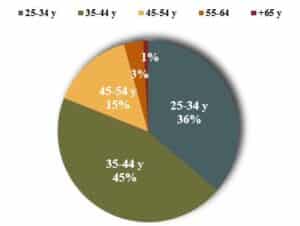
Table 5: What is your age category?
3. Experience
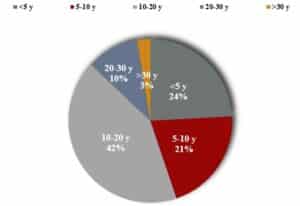
Table 6: How many years have you been practicing dentistry?
4. Number of root canal treatments on average per week

Table 7: How many root canal treatments (RCT) do you perform in a week?
5. Choice of preferred antibiotic
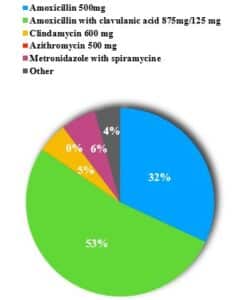
Table 8: If oral antibiotics are indicated, which antibiotic would you choose for the treatment of an endodontic infection in an adult patient without allergies?
6. The antibiotic of choice for penicillin allergic patients
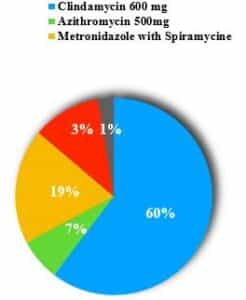
Table 9: If the administration of oral antibiotics is indicated in an adult patient allergic to penicillin, which antibiotic do you prescribe?
7. Duration of treatment
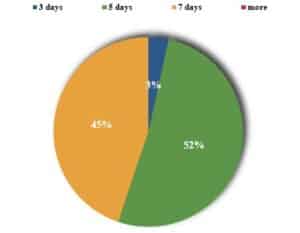
Table 10: For how long (how many days) do you prescribe the antibiotic?
8. Antibiotic prescription according to type of endodontic infection.

Table 11: Type of endodontic infection.
9. Antibiotic prophylaxis

Table 12: Before which therapeutic procedures do you prescribe prophylactic antibiotics if indicated?
10. Antibiotic prophylaxis regimen
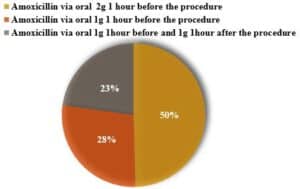
Table 13: If antibiotic prophylaxis is indicated, how do you prescribe the antibiotic to an adult patient without penicillin allergy?
11. Antibotic prophylaxis for clinical situations
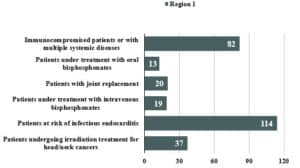
Table 14: In which of the following cases do you think you can indicate antibiotic prophylaxis? You can choose more than one answer.
Discussion
This study shows the current knowledge and habits of Romanian dentists about indications of systemic antibiotic treatment for pulpo-periapical infections and antibiotic prophylaxis in endodontics.
The data analysed in this survey show that many dentists correctly prescribed the antibiotic for endodontic infections, as well for prophylaxis; still, a large number of dentists have erroneously prescribed the antibiotic treatment.
The population sample used in this survey was represented by a number of 116 Romanian dentists. Similar to this study, Martin-Jimenez, et al., found out that the majority of respondents were females in our study 76% were females versus 24% males [2].
The results of this study have been compared to other similar studies:
A 2009 study of Spanish Endodontic Society (Asociation Española de Endodoncia) revealed that Amoxicillin was the most prescribed antibiotic – 86.2% [3]
- In 2010 members of Spanish Society of Oral and Maxillofacial Surgery (Sociedad Española de Chirurgia Oral y Maxilofacial) chosen amoxicillin in 95% cases [10]
- Simple amoxicillin (or combined with Clavulanic acid) was the first choice antibiotic in other similar studies in European countries [19-23]
However, in USA the first choice antibiotic for endodontic infections is penicillin [4,21].
The position statement of European Society of Endodontology, based on current scientific evidence, recommends amoxicillin as a first choice antibiotic for non-allergic patients and with no immune conditions, keeping the combination amoxicillin with Clavulanic acid for cases where first therapy was ineffective [5,12].
For the penicillin allergic individuals, the choice of antibiotic varies worldwide or even in different regions of the same country [21].
The participants in this study chose the duration of antibiotic treatment depending on the severity of the endodontic infection as follows: 51.7% for 5 days, 44.8% for 7 days, 3.4% for 3 days.
The participants in this study chose the duration of antibiotic treatment depending on the severity of the endodontic infection as follows: 51.7% for 5 days, 44.8% for 7 days, 3.4% for 3 days.
The reference point for the duration of antibiotic treatment is the improvement of clinical symptoms. For this reason it is essential that the treatment be personalised and followed.
The recommendations are to prescribe the antibiotic for a 3 day period and reassess the patient after that, in order to evaluate if the treatment must be continued or stopped [5].
According to our study results, alike to other similar previous studies still persists the wrong idea that bacterial infections need a complete cycle of antibiotic therapy, although there is no scientific evidence to support that one week of antibiotic treatment is needed for endodontic infections [2,3,10,18,25].
The percentages of erroneous prescription of antibiotics are high, which brings to attention the lack of knowledge of dentists about the current scientific data regarding antibiotic therapy. This study also highlights the fact that many dentists prescribe antibiotics in clinical situations where is no need. This shows that many dentists ignore the scientific basis for prescribing antibiotics in endodontic infections.
The inadequate antibiotic prescribing patterns have been described in many studies from different countries [2,3,10,19-21,24,25].
For irreversible pulpitis (moderate/severe symptoms) or for irreversible pulpitis with symptomatic apical periodontitis 16.5% respectively 29/6% of respondents prescribed antibiotic. These clinical situations DO NOT require systemic antibiotic [5].
For pulp necrosis with asymptomatic apical periodontitis, also there is NO need for systemic antibiotic treatment [5]. However 3.5% of the dentists involved in this study prescribed antibiotic.
For pulp necrosis with acute apical periodontitis (no abscess and moderate/severe symptoms) 39.1% of the participants prescribed antibiotic; also 21.7 % respondents prescribed antibiotic for pulp necrosis with asymptomatic periodontitis, sinus tract and minor/absent symptoms.
These pathologies can be solved by local root canal treatment and analgesics prescription, with no need to administer systemic antibiotics [2,5].
For the last clinical situation in this survey – pulp necrosis with acute apical periodontitis, abscess present and moderate/severe symptoms 94.8% of participants prescribed antibiotic. In this clinical situation, yes, the antibiotic therapy is indicated as adjunctive treatment to root canal procedures in order to prevent the spread of infection [5].
Regarding the prophylactic use of antibiotics in patients that have indications for such therapy, 53,5% of respondents said that it would be needed before periapical surgery.
European Society of Endodontology recommends for allergy free patients 2 g of amoxicillin administered via oral 1 hour before the procedure [5].
Conclusion
The antibiotic prescription pattern and the indications for use of antibiotics recommended by Romanian dentists is inadequate and does not follow current scientific evidence. The percentage of dentists who chose correctly the type of antibiotic for endodontic infections is elevated (84.5% – amoxicillin or amoxicillin with Clavulanic acid). In most cases the duration of treatment was prolonged: 51.7% 5 days or 44.8% 7 days; the percentage of dentists who recommend use of systemic antibiotic in clinical cases where is no need is very high (nearly 100%). There is an urgent need to develop new strategies to make known current recommendations on antibiotic administration in endodontic infections.
Contribution Note
All the authors equally contributed to the drawing up of the present paper.
Conflict of Interest
The authors declare that they have no conflict of interest.
References
- Canalda Sahli C, Brau Aguadé E, editors. Endodoncia : técnicas clínicas y bases cientí Barcelona: Elsevier/Masson. 2014;3rd Ed.
- Martín-Jiménez M, Martín-Biedma B, López-López J, Alonso-Ezpeleta O, Velasco-Ortega E, Jiménez Sánchez MC, et al. Dental students’ knowledge regarding the indications for antibiotics in the management of endodontic infections. Int Endod J. 2018;51(1):118-27.
- Rodriguez-Núñez A, Cisneros-Cabello R, Velasco-Ortega E, Llamas-Carreras JM, Tórres-Lagares D, Segura-Egea JJ. Antibiotic use by members of the Spanish endodontic society. J Endod. 2009;35(9):1198-203.
- Yingling NM, Byrne BE, Hartwell GR. Antibiotic use by members of the American association of endodontists in the year 2000: Report of a national survey. J Endod. 2002;28(5):396-404.
- Segura-Egea JJ, Gould K, Şen BH, Jonasson P, Cotti E, Mazzoni A, et al. European Society of Endodontology position statement: the use of antibiotics in endodontics. Int Endod J. 2018;51(1):20-5.
- Ajantha GS, Hegde V. Antibacterial drug resistance and its impact on dentistry. NY State Dent J. 2012;78(4):38-41.
- AAE Position Statement: AAE Guidance on the use of systemic antibiotics in endodontics. Am Assoc Endodontists. 2017;43(9):1409-13.
- Canalda Sahli C, Brau Aguadé E, editors. Endodoncia : técnicas clínicas y bases cientí Barcelona: Elsevier; 2019;4th Ed.
- Lewis MAO. Why we must reduce dental prescription of antibiotics: European Union Antibiotic Awareness Day. Br Dent J. 2008;205(10):537-8.
- Segura-Egea JJ, Velasco-Ortega E, Torres-Lagares D, Velasco-Ponferrada MC, Monsalve-Guil L, Llamas-Carreras JM. Pattern of antibiotic prescription in the management of endodontic infections amongst Spanish oral surgeons. Int Endod J. 2010;43(4):342-50.
- Fouad AF, Rivera EM, Walton RE. Penicillin as a supplement in resolving the localized acute apical abscess. Oral Surg Oral Med Oral Pathol Oral Radiol Endod. 1996;81(5):590-5.
- Segura-Egea JJ, Gould K SB. Antibiotics in endodontics: a review. Int Endod J. 2017.
- Baumgartner JC, Xia T. Antibiotic susceptibility of bacteria associated with endodontic abscesses. J Endod. 2003;29(1):44-7.
- Wilson W, Taubert KA, Gewitz M, Lockhart PB, Baddour LM, Levison M, et al. Prevention of infective endocarditis: Guidelines from the American Heart Association. Circulation. 2007;116(15):1736-54.
- Dorn SO, Moodnik RM, Feldman MJ, Borden BG. Treatment of the endodontic emergency: a report based on a questionnaire-part I. J Endod. 1977;3(3):94-100.
- Dorn SO, Moodnik RM. Treatment of the endodontic emergency: a report based on a questionnaire-part II. J Endod. 1977;3(3):153-6.
- Gatewood RS, Himel VT, Dorn SO. Treatment of the endodontic emergency: A decade later. J Endod. 1990;16(6):284-91.
- Alonso-Ezpeleta O, Martín-Jiménez M, Martín-Biedma B, López-López J, FornerNavarro L, Martín-González J, et al. Use of antibiotics by Spanish dentists receiving postgraduate training in endodontics. J Clin Exp Dent. 2018;10(7):e687- 95.
- Mainjot A, D’Hoore W, Vanheusden A, Van Nieuwenhuysen JP. Antibiotic prescribing in dental practice in Belgium. Int Endod J. 2009;42(12):1112-7.
- Skučaitė N, Pečiulienė V, Manelienė R, Mačiulskienė Antibiotic prescription for the treatment of endodontic pathology: a survey among Lithuanian dentists. Med. 2010;46(12):806-13.
- Segura-Egea JJ, Martín-González J, Jiménez-Sánchez M del C, Crespo-Gallardo I, Saúco-Márquez JJ, Velasco-Ortega E. Worldwide pattern of antibiotic prescription in endodontic infections. Int Dent J. 2017;67(4):197-205.
- Tulip DE, Palmer NOA. A retrospective investigation of the clinical management of patients attending an out of hours dental clinic in Merseyside under the new NHS dental contract. Br Dent J. 2008;205(12):659-64.
- Kaptan RF, Haznedaroglu F, Basturk FB, Kayahan MB. Treatment approaches and antibiotic use for emergency dental treatment in Turkey. Ther Clin Risk Manag. 2013;9(1):443-9.
- Perić M, Perković I, Romić M, Simeon P, Matijević J, Mehičić GP, et al. The pattern of antibiotic prescribing by dental practitioners in Zagreb, Croatia. Cent Eur J Public Health. 2015;23(2):83-9.
- Prescription of antibiotics in Endodontics by general dentists. Estudio Transversal. Laura Domínguez Domínguez, Tutora: Jenifer Martín González Máster Universitario en Odontología Restauradora, Estética y Funcional. 2019/2020:3-26.
Article Type
Research Article
Publication History
Received Date: 30-11-2022
Accepted Date: 19-12-2022
Published Date: 26-12-2022
Copyright© 2022 by Mădălina C, et al. All rights reserved. This is an open access article distributed under the terms of the Creative Commons Attribution License, which permits unrestricted use, distribution, and reproduction in any medium, provided the original author and source are credited.
Citation: Tuculina MJ, et al. An Observational Study: Use of Systemic Antibiotics for Endodontic Infections Treatment. J Dental Health Oral Res. 2022;3(3):1-17.
Antibiotic of Choice | Loading Dose | Maintenance Dose | Duration |
Penicillin VK | 1000 mg | 500 mg q4-6h | 3-7 days |
Amoxicillin | 1000 mg | 500 mg q8h or | 3-7 days |
875 mg q12h | |||
Amoxicillin with clavulanic acid | 1000 mg | 500 mg q8h or | 3-7 days |
875 mg q12h | |||
Clindamycin | 600 mg | 300 mg q6h | 3-7 days |
Clarithromycin | 500 mg | 250 mg q12h | 3-7 days |
Azithromycin | 500 mg | 250 mg q24h | 3-7 days |
Metronidazole | 1000 mg | 500 mg q6h | 3-7 days |
Table 1: Type, dosages and duration of antibiotics prescribed in Endodontics [5].
Patient group | Indications |
Impaired imunologic function (Leukaemia, HIV/AIDS, end-stage renal disease, dialysis, uncontrolled diabetes, chemotherapy, steroids or immunosuppressive medications, inherited genetic defects) | Non surgical root canal treatment and especially endodontic surgery |
Risk of developing infective endocarditis (Patients with complex congenital heart defects, prosthertic cardiac valve or a history of infective endocarditis) | Non surgical root canal treatment |
Prosthetic Joint Replacement | Endodontic surgery |
Non surgical root canal treatment | |
Endodontic surgery | |
During the first 3 months after joint operations | |
Patients whose jawbones are exposed to high-dose irradiation | Non surgical root canal treatment Endodontic surgery |
Patients receiving intravenous bisphosphonate treatment | Endodontic surgery |
Table 2: Indications of antibiotic prophylaxis in Endodontics [5].
Patient Group | Antibiotic | Route | Adults | Children | Timing Before Procedure |
Standard general prophylaxis | Amoxicillin | PO | 2 g | 50 mg/kg | 1 h |
Unable to take oral medication | Ampicillin | IV or IM | 2 g | 50 mg/kg | 30 min |
Allergic to penicillin | Clindamycin | PO | 600 mg | 20 mg/kg | 1 h |
Azithromycin | PO | 500 mg | 15 mg/kg | 1 h | |
Clarithromycin | PO | 500 mg | 15 mg/kg | 1 h | |
Cephalexin | PO | 2 g | 50 mg/kg | 1 h | |
Allergic to penicillin/amoxicillin/ampicillin and unable to take oral medications | Clindamycin | IV | 600 mg | 20 mg/kg | 30 min |
Cefazolin | IV | 1 g | 25 mg /kg | 30 min |
Table 3: Recommended antibiotic prophylaxis regimens in Endodontics.
The gender of the study participants | Male | Female |
Number of study participants | 24% | 76% |
Table 4: What is your gender?

Table 5: What is your age category?

Table 6: How many years have you been practicing dentistry?

Table 7: How many root canal treatments (RCT) do you perform in a week?

Table 8: If oral antibiotics are indicated, which antibiotic would you choose for the treatment of an endodontic infection in an adult patient without allergies?

Table 9: If the administration of oral antibiotics is indicated in an adult patient allergic to penicillin, which antibiotic do you prescribe?

Table 10: For how long (how many days) do you prescribe the antibiotic?

Table 11: Type of endodontic infection.

Table 12: Before which therapeutic procedures do you prescribe prophylactic antibiotics if indicated?

Table 13: If antibiotic prophylaxis is indicated, how do you prescribe the antibiotic to an adult patient without penicillin allergy?

Table 14: In which of the following cases do you think you can indicate antibiotic prophylaxis? You can choose more than one answer.


